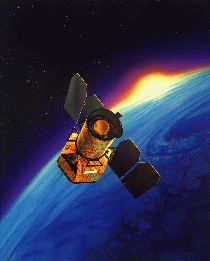GASS Survey Status
GASS sample
The GASS targets for Arecibo observations are selected according to the following criteria:
- location within the intersection of the footprints of:
- SDSS DR6 spectroscopic survey
- Arecibo Legacy Fast ALFA (ALFALFA) survey
- GALEX Medium Imaging Survey (MIS)
- redshift: 0.025 < z < 0.05
- stellar mass: 10 < Log Mstar < 11.5 (solar units)
Since the ALFALFA and GALEX surveys were on-going, we
defined a GASS
parent sample (based on SDSS DR6 and the maximal
ALFALFA footprint) from which the targets were
extracted. The final GASS sample includes ~800 galaxies,
chosen by randomly selecting a subset which balanced the distribution
across stellar mass and RA and which maximized existing GALEX exposure
time. The GASS parent sample includes ~10000 galaxies
that satisfy all of the above criteria except that the UV photometry
comes from either the GALEX All-sky Survey (AIS; ~100s;
FUV
lim, NUV
lim < 21) or the MIS (~1500s;
FUV
lim, NUV
lim < 23).

Sky distribution of galaxies in the GASS parent sample (red). Blue
symbols indicate the subset of
GASS galaxies that have been detected by ALFALFA in the Spring sky
area cataloged to date.
Observing status
GASS observations started in March 2008 and are completed. A total of
1005 hours of telescope time have been allocated to the
project.
All observations until end of April 2009
(~170 hours) were carried out remotely from the MPA, Garching.
New observers, trained on site in May 2009, have routinely carried out
remote observations from MPA, Columbia, JHU and NYU.
The observing team included: Barbara Catinella (lead, MPA),
Silvia Fabello and Andrew Cooper (MPA), Jenna Lemonias and
Cameron Hummels (Columbia), Sean Moran (JHU) and Ronin Wu (Paris).
There have been three data releases (see
Publications).
The combined catalogs and the HI spectra are available on our
Data page.
Highlights from first results
Catinella et al. (2010; GP1) presented the initial GASS data release (DR1;
~20% of complete survey) and a first exploration of HI-mass fraction
scaling relations as a function of stellar mass, NUV-r color, stellar
mass surface density and concentration (a proxy for
bulge-to-disk ratio). Contrary to naive expectations, GP1 found that
the majority of massive galaxies are not gas-deficient. Roughly 60%
of the sample is detected above the gas fraction limit, with a high
detection fraction even in the highest stellar mass bins. Despite high
detection rates, gas fraction measurements show that the HI-mass
fraction is anti-correlated with stellar mass (as shown below), color and stellar
mass surface density, with a considerably weaker anti-correlation vs. concentration.
Schiminovich et al. (2010; GP2) measured the mean SFR efficiencies
(SFE) across the GASS sample and used this to search for highly
efficient or inefficient star-forming galaxies. While the SFE has been
discussed extensively in the literature, this work marks the first
time that SFEs have been directly measured in a volume-limited sample
of massive galaxies. GP2 derived new scaling relations associated
with SFR in massive galaxies (shown also below). Unlike the mean sSFR, which
decreases with stellar mass, the mean SFE remains nearly constant
across the sample with a value close to SFE = 10
-9.5 yr
-1
(or an equivalent gas consumption timescale of ~3 Gyr).
By combining GASS measurements with recent estimates of the local
stellar mass function (Borch et al. 2006), GP2 was also able to obtain
a census of the HI mass density and SFR density in massive galaxies.
GP2 determined that 36% of the total HI mass density and 47% of the
total SFR density is found in galaxies with M
star
> 10
10 M
sun. In other words,
a significant fraction of the
HI and SFR in the local universe is found within galaxies in this
stellar mass range. These results are consistent with the fact that
our sample, while restricted to relatively massive galaxies, includes
many galaxies that are blue and/or not quiescent, in contrast with samples
selected by color or early-type morphology, the latter of which are known to
have low gas fractions and low star formation rates.

Gallery of GASS scaling relations vs. stellar mass, for cold gas in
massive galaxies. HI-mass fraction and sSFR are anti-correlated with
stellar mass while SFE remains constant. Top: Data points
from GASS DR1. Bottom: Mean and median scaling relations.
Left: Gas fractions from Catinella et al. (2010). Dashed line
indicates GASS detection limit. ALFALFA detections plotted in
grey. Middle and Right: sSFR and SFE vs. stellar mass from
Schiminovich et al. (2010). Middle top: greyscale from full GALEX+SDSS sample.
Optical follow-up
Sean Moran (P.I.) and others have been pursuing a program of long-slit
spectroscopy using the 6.5m MMT and the 3.5m telescope at Apache
Point. This optical follow-up of GASS targets aims to relate the HI
content to the spatially-resolved recent and ongoing star formation
histories of GASS galaxies. Since the first observations in Oct 2008,
120 resolved spectra have been obtained (as of November 2009),
out of an eventual goal of 300 galaxies, approximately 1/3 of the GASS sample.
Barbara Catinella
Last modified: Aug 9 2013







